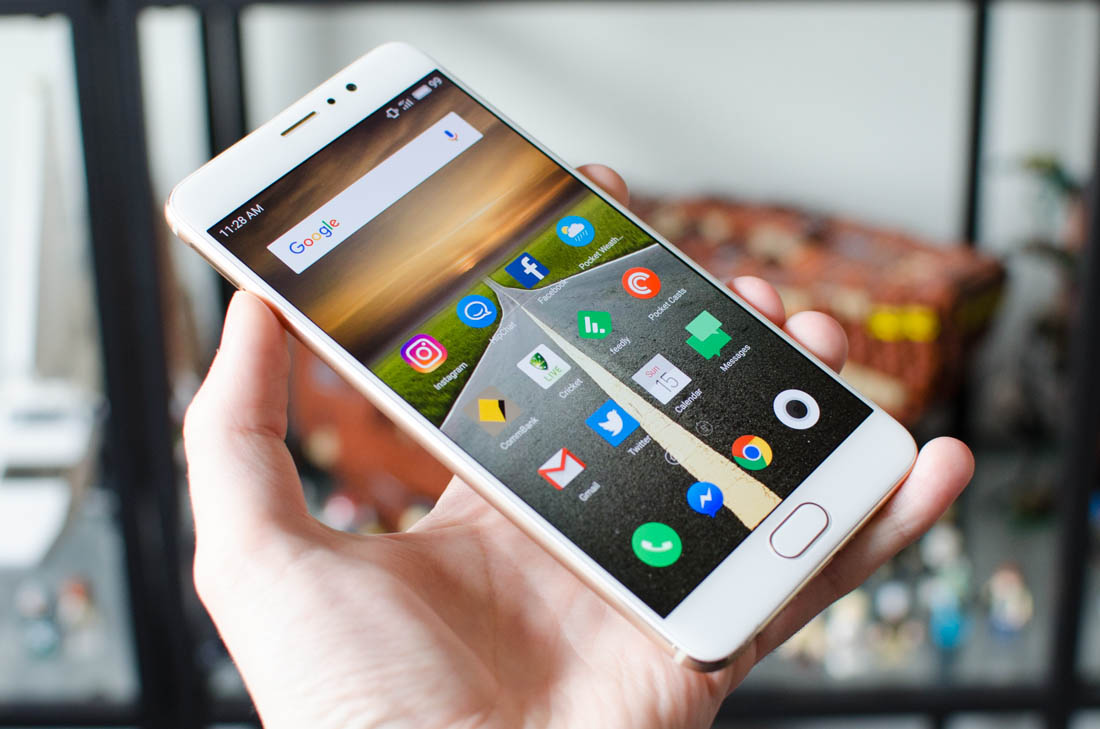Reviews of Meizu Pro 6 Plus
Of
all the products I’ve used from Chinese OEMs, those from Meizu always
struck me as the most polished. While Meizu largely focuses on their
home market, their smartphones are typically quite usable in Western
territories, with near-perfect English localization. Better yet, Meizu
employs a Xiaomi-like pricing structure such that most of their phones
are aggressively priced for the hardware you get.
The Pro 6 Plus is the highest-end smartphone currently sold by Meizu. It’s a true flagship, featuring the same Exynos SoC as seen in the Samsung Galaxy S7, a large 5.7-inch 1440p AMOLED display, and a beautiful aluminium unibody chassis. Even the camera, a 12-megapixel sensor with OIS and laser autofocus, is similar to what we see in high-end devices from Samsung, Google and Huawei.

Despite packing top-end specifications, the Meizu Pro 6 Plus is an affordable handset in China, retailing for just CNY 2,999 (approximately US$430). It may cost a bit more than this to import the Pro 6 Plus into North America, but the handset should be available across Europe and Asia shortly. At this price, the Pro 6 Plus undercuts most of its competition, and directly competes with the OnePlus 3T.
The Pro 6 Plus features one of the most beautiful smartphone designs I’ve seen. Meizu often nails the design of their entry-level products, but they’ve really hit it out of the park with their flagship offering. At the top of the table there’s a lot of tough competition, and throughout 2016 I saw fantastic designs from OnePlus, Samsung, Apple and HTC (to name a few). The Pro 6 Plus packs a design just as good as these ‘name brand’ handsets, and even beats it in some circumstances.

Most of the Pro 6 Plus’ chassis is a single piece of metal, which encompasses the entire back panel and curves around the edges. The only parts of this rear panel that aren’t metal are the neat antenna lines at the top and bottom, along with the camera lens and flash array. The quality of metal used here is top notch: its matte finish looks exquisite and feels fantastic. I appreciate the minimalist design as well, which puts this metal on display without interference from plastic sections or separate panels.
For a large phone, the Pro 6 Plus is remarkably ergonomic. The metal back curves perfectly into the edges, creating a comfortable rounded edge that makes the phone sit well in your hand. The phone is thin at 7.3mm, and surprisingly light at 158 grams, which helps with portability. In comparison, the ill-fated Galaxy Note 7 is slightly thicker and heavier for a similar battery capacity, while the iPhone 7 Plus is very similar in size but includes a smaller 5.5-inch display. The Pro 6 Plus doesn’t include the slimmest bezels I’ve seen, though they’re much slimmer than the monstrous bezels on the iPhone.

The front of this phone is a massive piece of smooth glass, again curved to perfection along the edges for a swooshable touchscreen experience. Most of this front panel is occupied by the display – the Pro 6 Plus has a screen-to-body ration of 74% – although there is a speaker, camera and some sensors above the display, plus a fingerprint sensor below the display.
I generally prefer rear fingerprint sensors compared to front sensors, but the position here isn’t bad. The sensor is fast and reasonably accurate, and while it’s not quite as good as the sensor found on the Google Pixel or the iPhone 7, it serves its purpose well. The sensor doubles as both a home and back button: clicking the sensor returns home, while tapping it like a touchscreen goes back. This functionality is included because, like other Meizu phones, there are no physical or on-screen navigation buttons to accompany the single home/back button.

I strongly prefer a full array of navigation buttons for home, back, and recent apps, but it only takes a few weeks to fully adjust to Meizu’s navigation scheme. The main downside with this scheme is accessing the recent apps slider for multitasking, which requires swiping up from the bottom of the display. This is somewhat awkward and not as easy to activate as simply tapping a button.
The fingerprint sensor is also supposed to double as a heart rate monitor, but I couldn’t find any software included on the device (or any popular third party apps) that supported this feature.

The position of the fingerprint sensor on the Pro 6 Plus means there is no stereo front facing speakers on this device. Instead, there is a single bottom-firing speaker of mediocre quality and volume. During landscape phone usage, particularly while gaming, this speaker is easy to block, so you’ll have to watch the position of your fingers at times.
The bottom edge takes design inspiration from the iPhone 6s Plus and the Galaxy S7 Edge. In the center is a USB-C port for charging and data transfers, flanked by iPhone-like exposed pentalobe screws. This USB port supports USB 3.1 for fast data transfers, which is rare in smartphones despite most laptops supporting at least USB 3.1 through their USB-C ports. The speaker grille is on the right here, with a similar design to the Galaxy S7 Edge, while the important 3.5mm headphone jack is on the left.

With all the ports found along the bottom edge of the Pro 6 Plus, the top is left relatively free, except for a single microphone.
The Pro 6 Plus comes with a single tray on the left hand side that supports two nano-SIM cards. There is no microSD card slot included on this device, although you’ll get 64 GB of internal storage as standard with the option to upgrade to 128 GB. While I would have preferred to see a microSD card slot here, 64 GB of storage should be plenty for most users, and the 128 GB model is reasonably priced.
The Pro 6 Plus is the highest-end smartphone currently sold by Meizu. It’s a true flagship, featuring the same Exynos SoC as seen in the Samsung Galaxy S7, a large 5.7-inch 1440p AMOLED display, and a beautiful aluminium unibody chassis. Even the camera, a 12-megapixel sensor with OIS and laser autofocus, is similar to what we see in high-end devices from Samsung, Google and Huawei.

Despite packing top-end specifications, the Meizu Pro 6 Plus is an affordable handset in China, retailing for just CNY 2,999 (approximately US$430). It may cost a bit more than this to import the Pro 6 Plus into North America, but the handset should be available across Europe and Asia shortly. At this price, the Pro 6 Plus undercuts most of its competition, and directly competes with the OnePlus 3T.
The Pro 6 Plus features one of the most beautiful smartphone designs I’ve seen. Meizu often nails the design of their entry-level products, but they’ve really hit it out of the park with their flagship offering. At the top of the table there’s a lot of tough competition, and throughout 2016 I saw fantastic designs from OnePlus, Samsung, Apple and HTC (to name a few). The Pro 6 Plus packs a design just as good as these ‘name brand’ handsets, and even beats it in some circumstances.

Most of the Pro 6 Plus’ chassis is a single piece of metal, which encompasses the entire back panel and curves around the edges. The only parts of this rear panel that aren’t metal are the neat antenna lines at the top and bottom, along with the camera lens and flash array. The quality of metal used here is top notch: its matte finish looks exquisite and feels fantastic. I appreciate the minimalist design as well, which puts this metal on display without interference from plastic sections or separate panels.
For a large phone, the Pro 6 Plus is remarkably ergonomic. The metal back curves perfectly into the edges, creating a comfortable rounded edge that makes the phone sit well in your hand. The phone is thin at 7.3mm, and surprisingly light at 158 grams, which helps with portability. In comparison, the ill-fated Galaxy Note 7 is slightly thicker and heavier for a similar battery capacity, while the iPhone 7 Plus is very similar in size but includes a smaller 5.5-inch display. The Pro 6 Plus doesn’t include the slimmest bezels I’ve seen, though they’re much slimmer than the monstrous bezels on the iPhone.

The front of this phone is a massive piece of smooth glass, again curved to perfection along the edges for a swooshable touchscreen experience. Most of this front panel is occupied by the display – the Pro 6 Plus has a screen-to-body ration of 74% – although there is a speaker, camera and some sensors above the display, plus a fingerprint sensor below the display.
I generally prefer rear fingerprint sensors compared to front sensors, but the position here isn’t bad. The sensor is fast and reasonably accurate, and while it’s not quite as good as the sensor found on the Google Pixel or the iPhone 7, it serves its purpose well. The sensor doubles as both a home and back button: clicking the sensor returns home, while tapping it like a touchscreen goes back. This functionality is included because, like other Meizu phones, there are no physical or on-screen navigation buttons to accompany the single home/back button.

I strongly prefer a full array of navigation buttons for home, back, and recent apps, but it only takes a few weeks to fully adjust to Meizu’s navigation scheme. The main downside with this scheme is accessing the recent apps slider for multitasking, which requires swiping up from the bottom of the display. This is somewhat awkward and not as easy to activate as simply tapping a button.
The fingerprint sensor is also supposed to double as a heart rate monitor, but I couldn’t find any software included on the device (or any popular third party apps) that supported this feature.

The position of the fingerprint sensor on the Pro 6 Plus means there is no stereo front facing speakers on this device. Instead, there is a single bottom-firing speaker of mediocre quality and volume. During landscape phone usage, particularly while gaming, this speaker is easy to block, so you’ll have to watch the position of your fingers at times.
The bottom edge takes design inspiration from the iPhone 6s Plus and the Galaxy S7 Edge. In the center is a USB-C port for charging and data transfers, flanked by iPhone-like exposed pentalobe screws. This USB port supports USB 3.1 for fast data transfers, which is rare in smartphones despite most laptops supporting at least USB 3.1 through their USB-C ports. The speaker grille is on the right here, with a similar design to the Galaxy S7 Edge, while the important 3.5mm headphone jack is on the left.

With all the ports found along the bottom edge of the Pro 6 Plus, the top is left relatively free, except for a single microphone.
The Pro 6 Plus comes with a single tray on the left hand side that supports two nano-SIM cards. There is no microSD card slot included on this device, although you’ll get 64 GB of internal storage as standard with the option to upgrade to 128 GB. While I would have preferred to see a microSD card slot here, 64 GB of storage should be plenty for most users, and the 128 GB model is reasonably priced.


Comments
Post a Comment